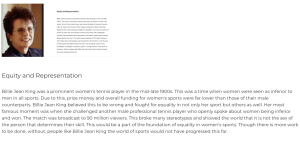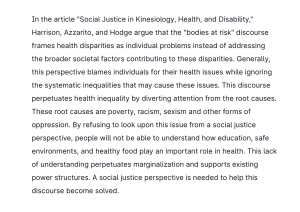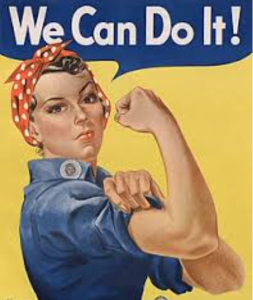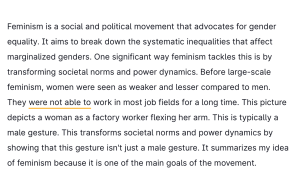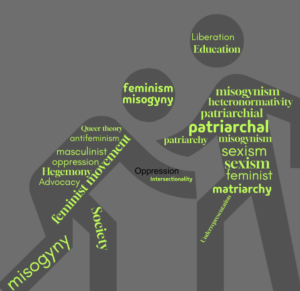1
Section One: The Fundamentals
A) What do we know about sport? What are common assumptions we make about sport and society?
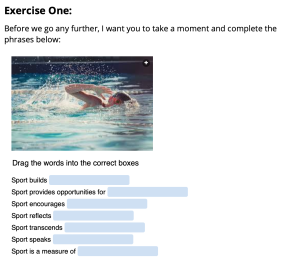
(The words are not showing so i cannot drag anything into the boxes. I will make my own if that is okay)
Sport builds character
Sport provides opportunities for social mobility
Sport encourages unity
Sport reflects values
Sport transcends differences
Sport speaks to the power of change
Sport is a measure of the ability to overcome challenges
Exercise 3: Notebook prompt
What are some other metanarratives about sport that you are familiar with? Find an image or video clip or draw something yourself that captures this idea…
So what? Why does any of this matter? Does it matter? As something we grow up with – live with – play through – we don’t often interrogate the meanings of sport, and perhaps we don’t want to.
But being aware of these assumptions and metanarratives is especially important, I would argue, because of the centrality of sport to our everyday lives, the role that sport plays in shaping our childhood and worldviews and….. [finish that thought]
|
For some people, sports can reinforce unhealthy behaviours like hyper-competitiveness, aggression, or exclusion. Athletes in high-pressure environments may face abuse, burnout, or mental health struggles, which can stunt personal growth rather than facilitate it.
|
B) What is social justice?
Exercise 4: Padlet Prompt
Think back to the last section and try to look at some of the ideas we discussed differently. How might sport and social justice actually co-exist?
Record any images, video clips, or gifs you added to the padlet and identify a point of intersection between sport and social justice (can be an issue or a barrier or a debate or something you would like to explore in more depth in this course) . Screenshot or paste in your response below.
|
Billie Jean King was a prominent women’s tennis player in the mid-late 1900s. This was a time when women were seen as inferior to men in all sports. Due to this, prize money and overall funding for women’s sports were far lower than those of their male counterparts. Billie Jean King believed this to be wrong and fought for equality in not only her sport but others as well. Her most famous moment was when she challenged another male professional tennis player who openly spoke about women being inferior and won. The match was broadcast to 90 million viewers. This broke many stereotypes and showed the world that it is not the sex of the person that determines their skill. This would be a part of the foundation of equality in women’s sports. Though there is more work to be done, without, people like Billie Jean King the world of sports would not have progressed this far.
|
C) Social Justice Reading
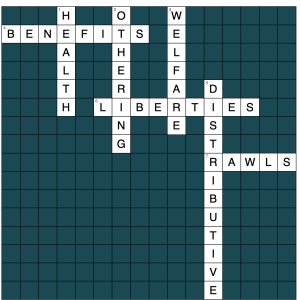
D) KINESIOLOGY AND SOCIAL JUSTICE
Exercise 5:

Exercise 6:
What are the implications of bodies-at-risk discourse and the refusal to understand the health gap from a social justice perspective, according to the authors of this article?
|
|
Section Two: Sport Feminism
Exercise 7: Notebook Prompt
What is feminism? What does it mean to you? Choose one of the images below and explain how it captures your understanding of feminism (or find one that does speak to you and paste this into your pressbook with an explanation of why it matters to you.
|
|
Exercise 8: Notes Prompt (optional)
NB: Cornell notes is a great resource that teaches effective notetaking. Unfortunately, our system can’t save notes taken in the H5P app, so this is fully optional.
Exercise 9: Crossword Activity
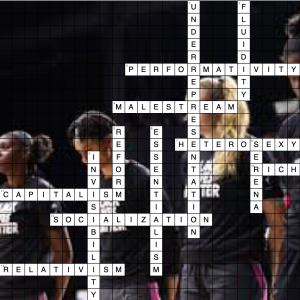
Exercise 10: Padlet Prompt
|
|
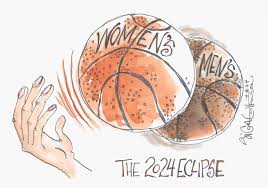
|
|

